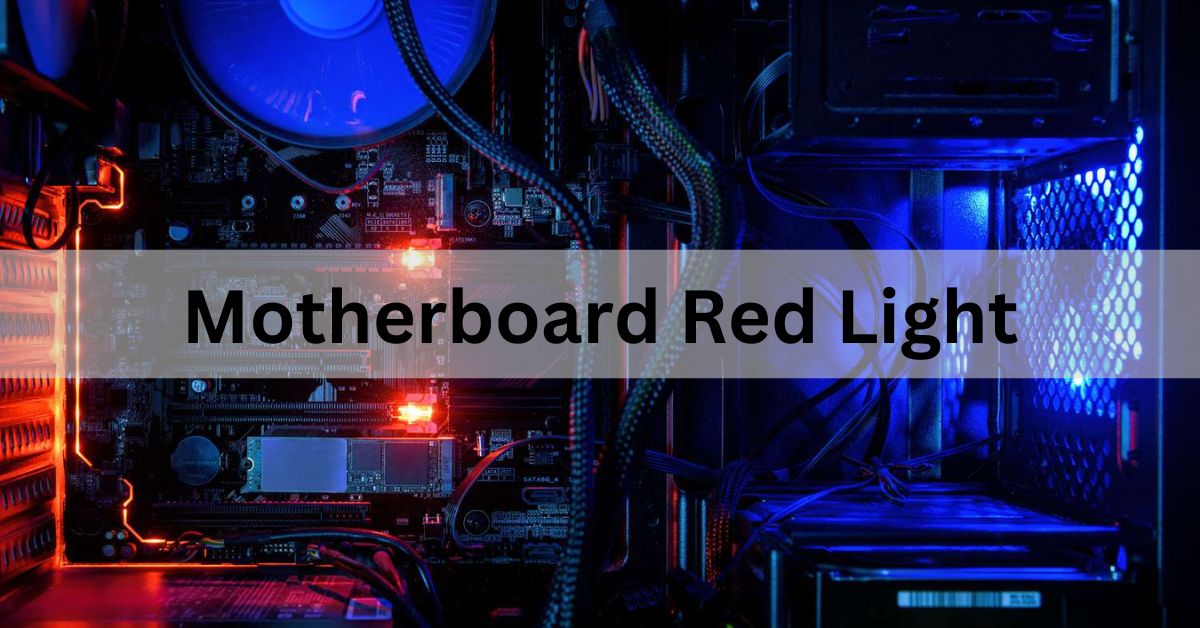A red light on the motherboard usually means a hardware issue, such as with the CPU, RAM, or power supply. Check connections and components, and consult the manual for troubleshooting.
In This article will help you understand the “motherboard red light” means, the possible causes, and how you can troubleshoot and resolve the issue effectively.
Table of Contents
What is a Motherboard?
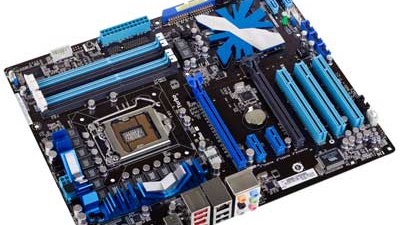
A motherboard is the main circuit board in a computer. It connects all the important parts, like the CPU, RAM, and storage devices. It allows these components to communicate with each other and helps your computer run smoothly. The motherboard also has slots for adding more parts or upgrading your computer.
What Does a Red Light on a Motherboard Indicate?
A red light on a motherboard typically serves as a warning signal indicating that there is a problem with one or more components of your system. Here’s a deeper look at what this red light might signify:
1. Power Supply Issues
One of the most common causes of a red light on your motherboard is a problem with the power supply unit (PSU). If your PSU isn’t delivering the correct voltage or is malfunctioning, it can cause the motherboard to display a red light. Here’s how to check and address power supply issues:
- Inspect PSU Connections: Ensure that all power cables from the PSU are securely connected to the motherboard, CPU, and other components. A loose connection can lead to insufficient power delivery.
- Test the PSU: If you have a PSU tester, use it to check if the power supply is providing the correct voltages. Alternatively, you can use a multimeter to test the PSU’s output.
- Consider a PSU Replacement: If the PSU is faulty or unable to provide enough power, consider replacing it with a new, high-quality unit.
2. Overheating Components
Overheating is another common issue that can trigger a red light on your motherboard. Modern motherboards have built-in sensors to monitor component temperatures. If these temperatures exceed safe limits, the motherboard may use a red light to alert you. Here’s how to deal with overheating:
- Check Temperature Readings: Access the BIOS or use software tools to monitor the temperatures of your CPU and GPU. High temperatures are a sign of overheating.
- Clean Dust and Debris: Dust buildup can obstruct airflow and cause overheating. Regularly clean your computer’s interior, including fans and heatsinks.
- Improve Cooling: Ensure that your case has adequate ventilation. Consider adding or upgrading fans or installing a better CPU cooler to enhance cooling performance.
3. Hardware Failures
A red light can also indicate a failure in one or more hardware components, such as RAM, CPU, or GPU. Each of these components plays a critical role in your computer’s operation. Here’s how to troubleshoot hardware issues:
- Reseat Components: Power off your computer and reseat RAM, GPU, and other removable components. Ensure they are properly and securely connected to the motherboard.
- Test Individual Components: If possible, test each component individually. For example, try using a different RAM module or GPU to see if the issue persists.
- Look for Physical Damage: Inspect each component for signs of damage, such as burnt areas or broken connectors. Replace any damaged parts as needed.
4. Improper Connections
Sometimes, a red light can be triggered by loose or improperly connected cables and components. Ensuring that everything is connected correctly can help resolve the issue:
- Check All Cables: Ensure that all power cables, data cables, and internal connectors are firmly attached. Loose cables can cause various problems, including a red light on the motherboard.
- Verify Component Installation: Make sure all components, including expansion cards and storage drives, are properly installed in their respective slots and connectors.
What the Red Light on a Motherboard Means?
The red light on a motherboard usually means there is a hardware problem. It can indicate issues with the CPU, RAM, or power supply. Check all connections and ensure components are properly installed. Consult your motherboard’s manual for specific meanings and troubleshooting steps to identify and fix the problem.
Troubleshooting the Red Light on Your Motherboard
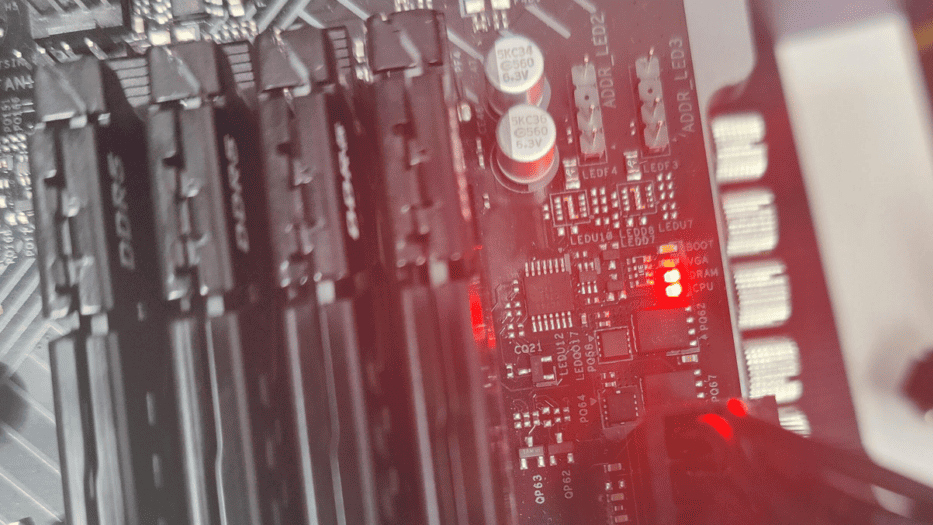
If you encounter a red light on your motherboard, follow these comprehensive troubleshooting steps to diagnose and fix the problem:
1. Power Supply Inspection
- Check Cable Connections: Begin by checking the connections of your power supply. Make sure the 24-pin ATX connector and the 8-pin CPU power connector are securely plugged into the motherboard.
- Test Power Supply Output: Use a PSU tester or multimeter to check the output voltages of the power supply. If the PSU is not providing the correct voltages, consider replacing it with a new one.
2. Overheating Diagnosis
- Monitor Temperatures: Use BIOS or third-party monitoring software to check the temperatures of your CPU, GPU, and other components. If temperatures are high, the system might be overheating.
- Clean and Improve Cooling: Clean dust from fans, heatsinks, and vents. Ensure that your case has proper airflow and consider upgrading your cooling solution if necessary.
3. Hardware Component Examination
- Reseat and Test Components: Remove and reseat RAM, GPU, and other hardware components. Test each component individually to identify any faulty parts.
- Inspect for Damage: Look for any visible signs of damage on components. Replace any damaged hardware to see if it resolves the issue.
4. Connection Verification
- Ensure Proper Connections: Double-check all internal and external connections. Loose cables or improper connections can cause a red light.
- Consult the Manual: Refer to your motherboard’s manual for specific details about the red light indicator. The manual may provide additional troubleshooting steps or explanations.
5. BIOS Reset
- Reset BIOS Settings: Resetting the BIOS to its default settings can sometimes resolve hardware detection issues. Refer to your motherboard’s manual for instructions on how to perform a BIOS reset.
Preventing Future Issues
To avoid future problems that might lead to a red light on your motherboard, consider the following preventive measures:
- Regular Maintenance: Perform regular maintenance on your computer to keep it clean and free from dust. This includes cleaning fans, heatsinks, and other components.
- Monitor Temperatures: Keep an eye on system temperatures using BIOS or monitoring software. Address any overheating issues promptly.
- Use Quality Components: Invest in high-quality components to reduce the risk of hardware failures. Reliable hardware is less likely to cause issues and will generally last longer.
What does a red light on a motherboard mean?
A red light on a motherboard usually indicates a hardware issue. It can mean there is a problem with the CPU, RAM, or power supply. Check all connections, reseat components, and consult your motherboard manual for specific troubleshooting steps.
How to fix red light on GPU?
Fix a red light on a GPU, first ensure the GPU is properly seated in its slot and that all power connectors are securely attached. Check if the GPU fans are working and test with another power supply if possible. If the red light persists, the GPU might need to be replaced.
How to Fix Red Light Errors on Your Motherboard?
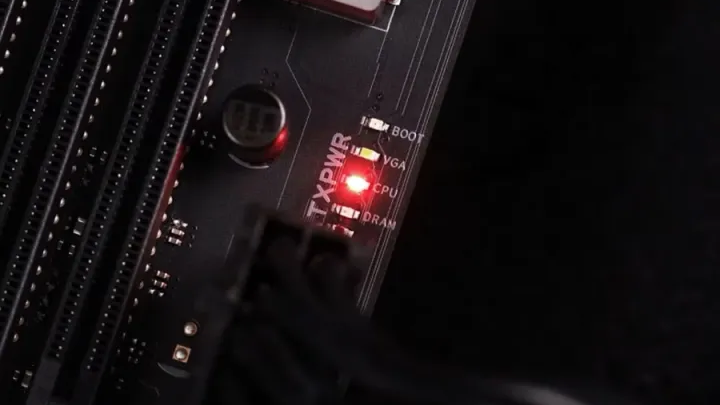
Fix red light errors on your motherboard, start by checking all power connections and ensuring components like RAM and CPU are properly installed. Reset the BIOS by removing the CMOS battery for a few minutes. If the issue continues, consult the motherboard manual or seek professional help.
What does a red DRAM light mean?
A red DRAM light on your motherboard typically means there is a problem with the RAM. This could be due to faulty RAM sticks, improper installation, or a BIOS issue. Reseat the RAM modules or test with different ones to resolve the problem.
How to fix red VGA light on motherboard?
Fix a red VGA light on your motherboard, check if the graphics card is properly seated and connected. Ensure all power cables are securely attached to the GPU. If the issue persists, test the GPU in another system or replace it to determine if it’s faulty.
Red light and yellow light on motherboard
Red and yellow lights on a motherboard usually indicate different hardware issues. A red light often signals critical problems, such as with the CPU or power supply, while a yellow light may suggest minor issues or warnings. Check your motherboard manual for specific meanings and troubleshooting steps.
Motherboard red light no display
If the motherboard shows a red light with no display, it often means there is a serious hardware issue, such as with the CPU, RAM, or GPU. Ensure all components are properly installed and connected. If the problem persists, the motherboard might need to be replaced.
CPU red light on motherboard
A CPU red light on the motherboard generally indicates a problem with the CPU. This could be due to improper installation, a faulty CPU, or an issue with the CPU cooler. Check all connections and ensure the CPU is properly seated.
How to fix red light on motherboard?
Fix a red light on the motherboard, start by checking all power connections and reseating components like RAM and GPU. Ensure there are no loose connections and the CPU is properly installed. If the red light persists, consult the motherboard manual or seek professional help.
Gigabyte motherboard red light
On a Gigabyte motherboard, a red light typically indicates a hardware issue, such as a problem with the CPU, RAM, or GPU. Check all connections, ensure components are properly seated, and consult the Gigabyte manual for specific troubleshooting advice.
Motherboard red light flashing
A flashing red light on the motherboard usually indicates an ongoing hardware problem or a system error. This can be due to issues with the CPU, RAM, or other components. Check all connections and components, and consult the motherboard manual for further troubleshooting steps.
Motherboard red light DRAM
A red light near the DRAM on the motherboard suggests an issue with the RAM. This could be caused by improperly seated RAM sticks, faulty memory, or a BIOS issue. Try reseating the RAM or testing with different modules to resolve the issue.
VGA red light on motherboard
A VGA red light on the motherboard indicates a problem with the graphics card. Ensure the GPU is properly seated and connected, and check all power cables. If the red light remains, test the GPU in another system or consider replacing it.
2 red lights on motherboard
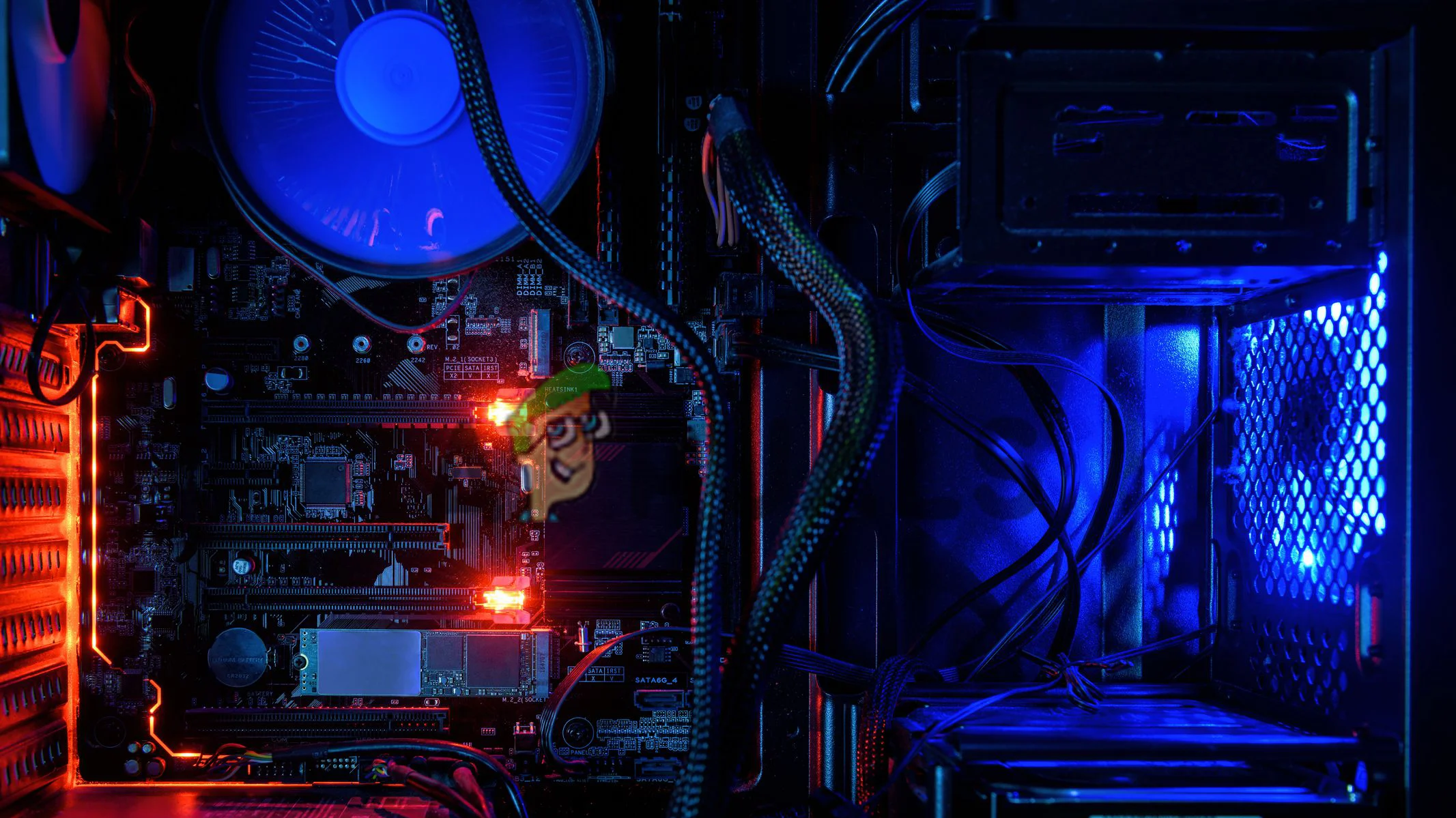
Two red lights on a motherboard can indicate multiple hardware issues. It might be related to problems with the CPU, RAM, or power supply. Check all components, ensure they are properly connected, and consult your motherboard manual for specific troubleshooting instructions.
FAQS:
1. What should I do if the red light on my motherboard doesn’t turn off?
If the red light remains on, double-check all connections and components. Ensure there are no hardware failures. If the issue persists, consider seeking help from a professional technician.
2. Can a red light on the motherboard mean a problem with the CPU?
Yes, a red light can indicate a problem with the CPU or its connection. Make sure the CPU is properly seated and connected, and check for any signs of damage.
3. How can I tell if the red light is related to overheating?
Use BIOS or a monitoring tool to check system temperatures. If temperatures are higher than normal, overheating might be the cause. Address cooling issues to prevent further problems.
4. Is it safe to continue using my computer with a red light on the motherboard?
It is not advisable to continue using your computer with a red light on the motherboard. The red light indicates a problem that could potentially cause further damage.
5. Can a faulty power supply cause a red light on the motherboard?
Yes, a faulty or insufficient power supply can cause a red light. Ensure that your power supply is functioning correctly and providing adequate power to all components.
Conclusion:
A red light on your motherboard usually points to a hardware issue, such as problems with the CPU, RAM, or power supply. To resolve this, check all connections, reseat components, and consult your motherboard’s manual for specific guidance. Proper maintenance and timely troubleshooting can help prevent these issues.

